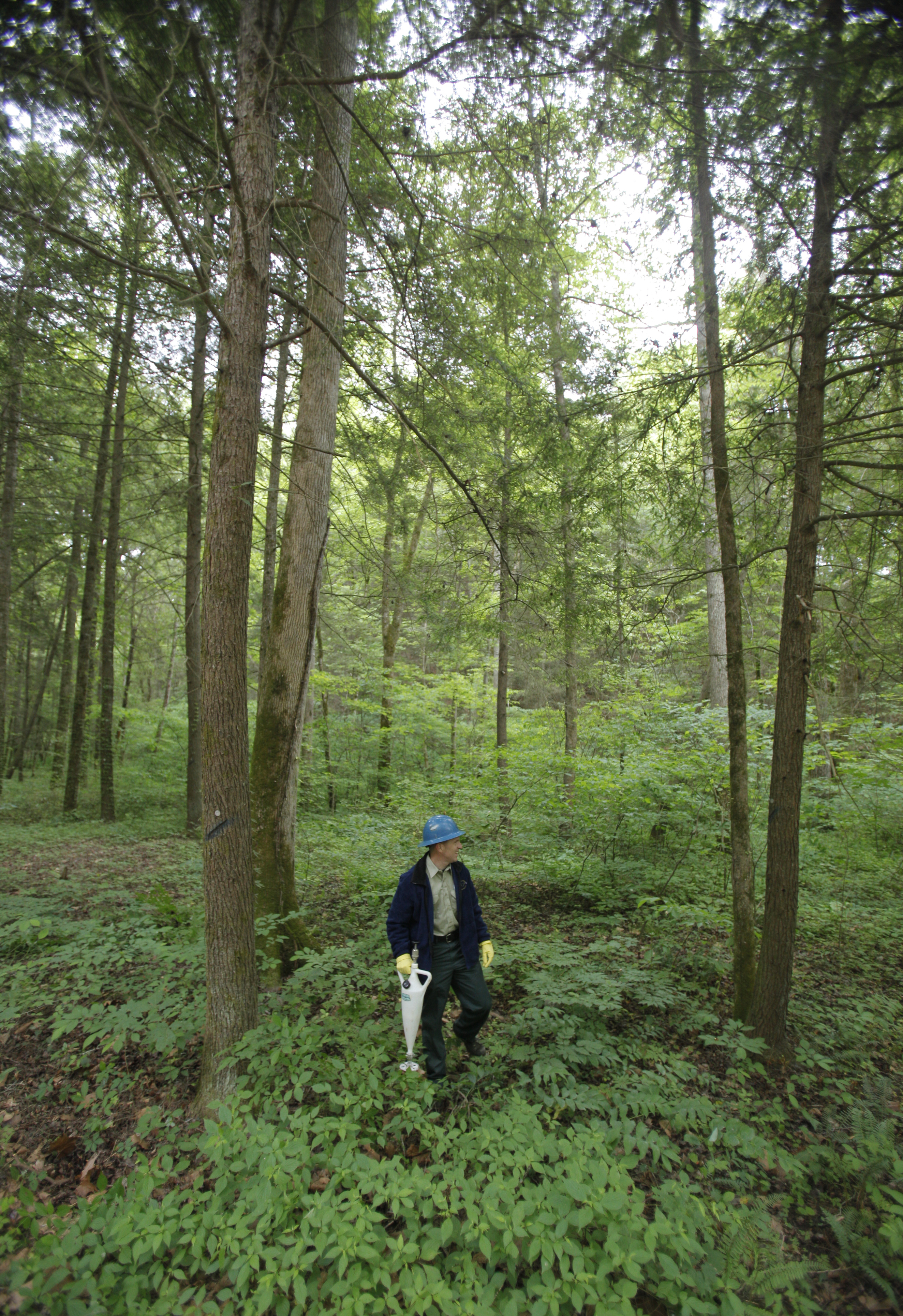BUYING NEW NATIONAL FOREST LANDS• $2 million in Georgia: Three tracts in Georgia's national forests near population centers where there are tremendous pressures for clean water and recreation• $5 million in Tennessee: A 10,000-acre tract that had been the largest undeveloped, privately owned tract in the Appalachian Mountains and seemed fated for an "upscale" development.Source: U.S. Forest Service
Tennessee and Georgia are among 15 states to receive a share of $40.6 million from the U.S. Forest Service.
National foresters in Tennessee are receiving $5 million to complete the $40 million purchase of a 10,000-acre tract called Rocky Fork to add to the Cherokee National Forest.
And national forest service officials in Georgia will receive $2 million to acquire three parcels to add to the Chattahoochee and Oconee national forests.
The money was awarded for the projects from the federal Land and Water Conservation Fund.
Jay Leutze, who serves on the board of the Southern Appalachian Highland Conservancy, said the Rocky Fork acquisition in Unicoi and Greene counties has taken five years to fund and has saved a public treasure that includes 1.5 miles of the Appalachian Trail.
"It was a once-in-a-lifetime opportunity. It was the largest undeveloped but privately owned tract in the Appalachians," he said of land that once had been leased to the Tennessee Wildlife Resources Area. But that lease had ended, and for a time, the tract went under contract to a developer.
"If it had been lost to development, the public would have lost an area they had come to love," Leutze said.
Over five years, the federal Land and Water Conservation Fund awarded $30.4 million toward the purchase. Tennessee invested $6 million, and donations from three conservation groups — Appalachian Trail Conservancy, the Southern Appalachian Highlands Conservancy and the Conservation Fund — rounded out the remainder.
"By purchasing it we were able protect the entire upper watershed of South Indian Creek and the rock fork stream drainage into the Nolichuckee River which protects several endangered mussels," Leutze said.
Terry McDonald, spokesman for the Cherokee National Forest said Rocky Fork was identified as a national priority because of its high natural resource and recreation values including the portion of the Appalachian Trail, the blue-ribbon trout fishing, rock climbing areas and hunting.
In Georgia, three tracts totaling 548 acres will be added to national forest lands and preserved, including 100 acres in the Chattahoochee National Forest in Gilmer County.
Mitch Cohen, spokesman for the Chattahoochee and Oconee national forests, said the Gilmer tract is estimated to cost $775,000 and will require congressional review because it exceeds $500,000. The review is scheduled in July.
A 440-acre tract in the Oconee portion of the forest in Putnam and Jones counties was purchased Friday for $1.1 million.
The third tract, a very small but very important eight-acre property right on the Chattahoochee River in White County, is estimated to cost $37,000.
"This is just the kind of property developers are looking for," Cohen said of the river tract. "So procuring this helps us protect the healthy watersheds of the national forest. And the Oconee addition is important for the habitat of the federally endangered red cockaded woodpecker."
All of the tracts acquired must already touch national forest property on at least one border, and often the purchased properties are "islands" of private land surrounded by national forests. Their purchase helps save federal money by eliminating survey costs when the forest must inventory or maintain it properties, he said.
The federal Land and Water Conservation Fund was created by Congress in 1964 to provide funding to federal, state and local governments to purchase land, water and wetlands. The fund is financed mostly through royalty payments from offshore oil and gas revenues targeted for environmental restorations and preservation.

